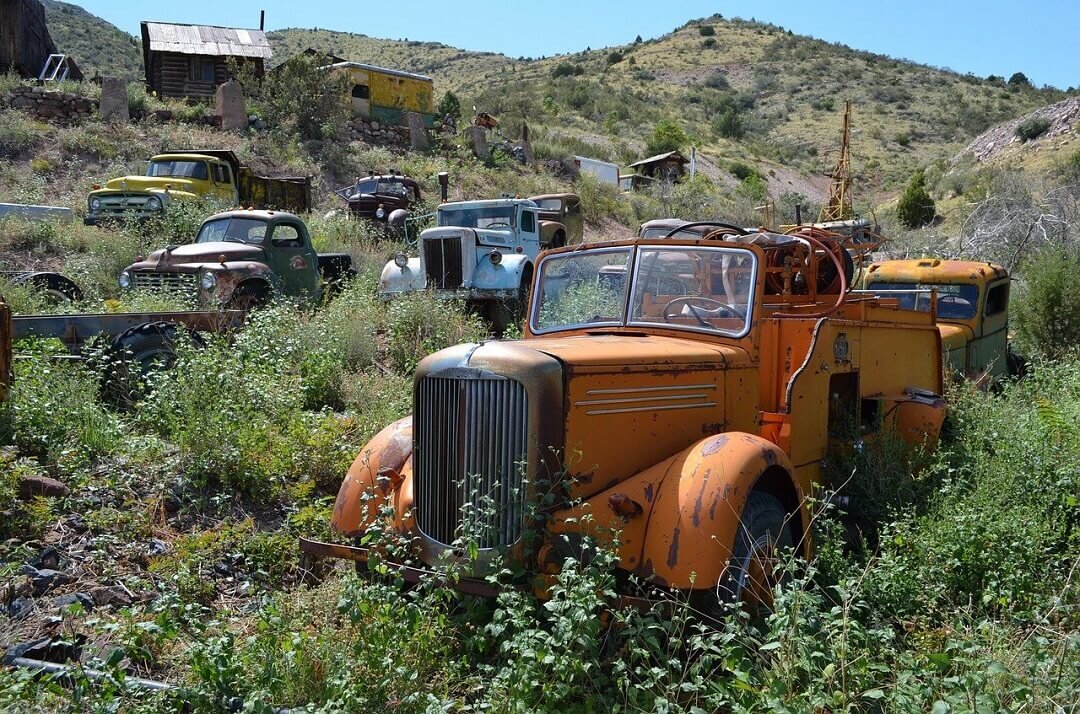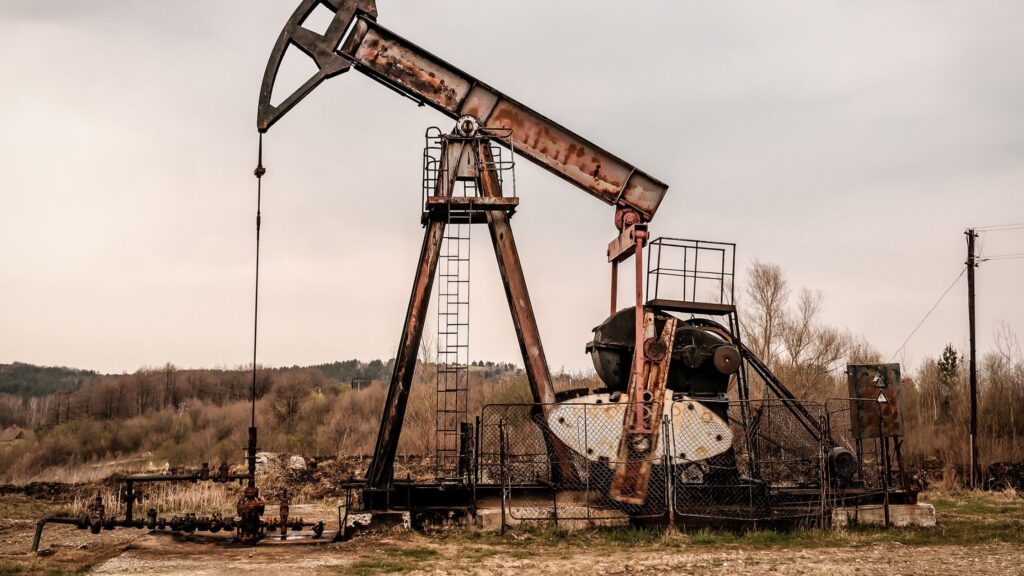But wait, before the dollar signs start flashing before your eyes, you need to determine if you do indeed own those mineral rights.
Mineral rights are often sold separately from the land they are on.
You may have title to the mineral rights on a property you own, or a previous owner may have sold or leased them – in which case, they may not be yours to sell.
But there is no need to abandon the idea of monetizing your mineral reserves!
Whether you are in the market to buy or sell mineral rights, we are here to provide you with the information you need to optimize opportunities and mitigate risks in the US mineral rights market.
In the current article, you will learn what mineral rights are and how do they work. You will better understand different types of mineral rights ownership, how they are separated from the property, valuing mineral reserves, finding mineral rights opportunities, and negotiating the best price and fees.
What are mineral rights?
Mineral rights bestow ownership of minerals below the surface of a tract of land to explore, develop, and extract the minerals. The mineral interest owner may excavate hard rock minerals such as gold or copper, drill an oil and gas well, or surface mine coal.
Four Types of Mineral Rights
While landowners once owned land from the middle of the earth to the air above, royalty has historically inserted their regalian rights and claimed ownership of minerals through the separation of the mineral and surface estate.
Today, it is common practice to separate mineral rights on the property from the parcel of land. The four major types of mineral rights are:
- Surface Rights – Surface rights provide ownership rights to the minerals on the surface only. Rights to minerals in the subsurface are not included.
- Mineral Interests – Different types of mineral interests provide ownership of mineral rights under the ground. Owners of subsurface rights can receive royalty, lease, and shut-in payments. Commonly applied in the oil and gas industry, shut-in payments are royalties paid by the oil and gas company to the lessor to maintain a lease on currently unproductive mineral assets.
- Royalty Rights – The owner of oil and gas royalty rights is an investor who earns a stream of royalty payments on mineral rights investment. The owner receives a share of the income as the minerals are produced from the leased property.
- Oil and Gas Rights – The fluidity of oil and gas makes it hard to define mineral rights by a defined well or geographic area. Oil can easily flow through faults and joints, and, in this way, reserves can spread to the subsurface of neighboring tracts of land. These fluid minerals that flow between properties and may be extracted from any property under which they move are called fugitive resources. This right is known as the “rule of capture.” If you have the mineral rights to drill a well on John’s property, you have a right to all the oil you capture, even if the oil is drawn from the adjoining properties of Fred and Alice.
How do mineral rights work?
The mineral rights give the owner permission to use the surface of the land to access the minerals for exploration and oil and gas production. Though penalties could be levied, and the mineral rights can even be withdrawn if the miner contravenes the surface damage agreement stipulating what types of activities are permissible.
The holders of mineral rights on a property can also lease, sell, and bequeath them as gifts. This way, they will pass them down from generation to generation, independent of changes in ownership of the attached property.
Also, you have to know that mineral rights and oil and gas royalties come with taxes. You can check our guide on mineral rights taxes and how to report oil and gas royalties on a tax return.
How far down do mineral rights go?
How far down the mineral rights go depends on the mineral and technology used.
The average depth of open-pit mining – a surface mining technique used to extract metals such as nickel, copper, uranium, and coal – is between 100–500 meters.
For deep mining, the average depth is 2.8–3.4 kilometers.
If an oil company wants to drill on your property, it will likely require a depth of at least 6,000 feet – the average depth of a crude oil and natural gas well.
Do mineral rights include water?
Generally, mineral rights do not include water or surface minerals such as gravel or sand, typically sold in high volume at a low price.
Types of Minerals
Mineral rights are applied differently to sedentary (hard rock) and fluid (oil, gas, geothermal) minerals. To define mineral rights better, the government have classified different types of minerals as:
- Locatable – These are mostly sedentary minerals, including metallic and industrial metals. They do not include coal, petroleum, phosphate, or potassium (Wikipedia).
- Leasable – Rights to fluid minerals that move below the surface are commonly leased and include oil and gas and geothermal resources.
- Salable – These minerals are generally abundant and sold in high weights at low unit prices for use in building materials and include sand and gravel. They can be removed from public land by obtaining approval from the Bureau of Land Management and are free to public entities and projects.
- Meteorites and New Mineral Discoveries – While established laws and court precedents well protect mineral rights holders, humankind constantly discovers new minerals – about 100 a year – and raise new mineral rights challenges. Less commonly but more frequently, ultra-rare minerals such as extraterrestrial minerals found in meteorites are mined on earth. In the future, they will be excavated from meteorites in space. These rare minerals can be more valuable than precious gems. Carmeltazite, a new meteorite mineral found on Mount Carmel in Israel, has a higher value than that of diamonds.
Who owns the mineral rights on your property?
Considering that the mineral rights can be worth much more than the land they are on, it is very important to find who owns the mineral rights on your property.
Many property buyers assume they are gaining ownership of the entire property, both surface and subsurface rights. This assumption is wrong.
Generally, a property conveyance transfers rights to both the surface land and mineral reserves below until the mineral rights are sold.
In this case, the mineral rights transfer with the property to you. If you or a previous landowner have not sold the mineral interests, you can sell your mineral rights to a big mining company or a trusted mineral rights broker.
Mineral rights agreements entered into by the previous landowners that have not expired are still valid, and you will be obligated under law to honor them.
If you neglected to conduct a thorough land and mineral rights search before buying the property, a young inheritor could show up on your doorstep demanding the right to drill oil and gas wells bestowed to his great-great-grandfather and passed down through the generations.
A large oil company could come calling
Oil companies tend to buy up many mineral rights on adjacent lands as future investments. They may be already actively drilling on your neighbor’s property. If they have also bought the mineral rights on your property, you could also receive a letter demanding access to explore and drill on your land.
So a property owner can sell the land and the mineral rights, or keep the land and sell the mineral rights.
Moreover, the landowner can sell rights to only the oil and gas, limestone, or coal on a tract of land. These rights can be further allocated to specific wells or coal seams, or by separating coal and coal methane, or by surface depth or geographic area, and so forth.
In the case of oil and gas, a lease agreement is entered into between the lessor (mineral rights owner, who may or may not also own the land) and the lessee.
How do you know if you have mineral rights on your property?
Like land, mineral rights are conveyed through a deed transferring ownership to the buyer. While the property deed will reference the transfer at the time of the separation of land and mineral rights, subsequent sales of the land will not.
To find out whether you or someone else owns the rights to minerals you need to search for mineral rights records. These rights are not registered in the county or municipal land titles registry office with general property deeds.
A lawyer or other titles searcher, known as Landmen, specializing in mineral rights searches, will conduct the search.
Types of Mineral Rights Ownership
In many countries, the government controls the minerals below the surface of all land. A miner must obtain rights from the government rather than the private property owner to extract those minerals. In the United States, the following are common rights agreements used in public and private mineral rights agreements.
- Unified Estate (Fee Simple Estate) – The most basic type of ownership is a fee simple estate in which the owner owns both the surface rights and below mineral rights, except for reserves with a sovereign claim. Also referred to as a fee simple estate, in the United States, the owner can sell these rights individually or together.
- Severed or Split Estate – A split estate separates the surface and mining ownership rights. In the United States, the property owner, a third party, or the Federal government can own the subsurface rights. These separate mining rights can be gifted and bestowed as an inheritance and passed down through generations.
- Royalties – The holder of a right to royalties receives a portion of the revenues from the production of a mineral fee estate in the form of a stream of royalty payments. However, he/she does not possess the other rights of ownership, such as the right to lease or sell the underlying mineral rights.
- Mineral Leases – Leasing allows mining companies to explore potential reserves at a lower cost than buying the mining rights outright.
- Licenses – A land/mineral rights holder may grant a third party a license to extract and remove reserves from a property. The license holder has no ownership privileges beyond the contracted amount of reserves he has title to.
- Easements – An easement may be issued to a third party to conduct exploration on land. Additionally, they may obtain the right to extract the minerals.
Usually, you can transfer any of the rights above either by deed, by will or with a lease. Check our guide on how to transfer ownership of mineral rights to learn more about the process and what to do when the case is a private one. For example, after death or during a divorce.
Mineral Rights Inheritance and Fractionalization Ownership
Inherited mineral rights create another form of ownership – fractionalization ownership.
The fractionalization of mineral rights occurs when there are two or more owners, which often arises through inheritance. An owner of mineral rights, for example, could bequeath that right to his four children giving each a 25 percent stake in the mineral right.
If these ownership stakes were to be passed on to further generations, it would further diversify ownership and could create conflicts. If, for example, some inheritors want to sell the entire stake, others could try to stop the sale.
Alternatively, individual interests could be created by, for example, granting each inheritor 25 acres of a 100-acre mineral interest.
Do Mineral Rights Expire?
Even if mineral rights have been previously sold on your property, they could be expired. There is no one answer to how long mineral rights may last. Each mineral rights agreement will have different terms.
A mineral rights agreement may range from a few to 20 years.
Oil and gas leases often have two terms: a primary and a secondary term.
- If no drilling or production activity has taken place at the end of a primary term, the lease will expire.
- If, on the other hand, drilling or production work is ongoing, the contract will automatically be extended into the secondary term.
In the secondary phase, drilling and production can continue as long as the activity does not lapse for more than 90 or 60 days, respectively, though terms may vary by state.
If a late start in mining causes an unnecessary delay in royalties or rental payments, the landowner (lessor) may be able to demand early termination of a mining right/lease.
As mentioned, even if your property’s mineral rights were previously sold, you may currently hold the rights, so it is essential to do your due diligence.
In the case of the Cole family of Virginia, the rights to a uranium motherload – the largest uranium deposit in the US – reverted back to them when uranium miners abandoned mining the reserves as uranium prices fell and let the leases expire. The family’s homestead and farm, established in 1785, sits on 119 million tons of uranium, currently valued at $6 billion.
What are unclaimed mineral rights and how should one deal with them?
If an operator has not paid a mineral rights owner for 1-5 years, they are entitled to escheat the funds to the state, which will become Unclaimed Property (Mineral Rights). Unclaimed royalties worth millions of dollars are waiting to be claimed by their rightful owners. Interested parties may file a claim on unclaimed royalties (also called production payments) in their names or the names of those from whom they inherited property.
To File for unclaimed mineral rights, we advise you to follow these steps;
- Search the database for unclaimed mineral rights/royalties. You can check state by state but note that you may not find it for all states.
- You can also check for unclaimed property records of the state where the mineral owner resides or where the oil and gas operator resides.
After checking each of these places, you should find proof that links you to the unclaimed mineral rights, then you can file a new right claim at the county house or state land office.
Buying and Selling Mineral Rights
For anyone seeking to buy mineral rights, the United States offers tremendous and growing opportunities, which are increasing considerably with the sell-off of Federal lands.
Alaska is currently selling off close to 30 million acres in public areas, despite the stalling of a wholesale sell-off of Federal public lands in Congress.
Ample opportunities exist to buy, lease, or invest in royalties of hard rock and oil and gas mineral rights.
Who Benefits From Mineral Rights?
1. Landowners
- Mineral extraction is often not profitable for a landowner after making the necessary capital investments in exploration and extraction equipment. By selling the mineral rights to a miner, they can still profit from the reserves by receiving leases, royalties, and other forms of fees.
- Property owners (the lessor) charge lease payments called a signing bonus for the right to explore for minerals for a period of time. If the lessee decides to extract the minerals, the lessor then receives royalty payments; otherwise, the lease expires with no further payments. The royalty payment may range from 12.5–25 percent.
- The landowner can also sell options on the right to buy mineral rights and profit even if the options are not exercised. If the option buyer exercises the right to obtain the mineral rights at a fixed price and date, the landowner will receive full payment. If the buyer lets the options expire unexercised, the landowner will pocket the options fees.
2. Mining Companies
- A mining company will buy many mineral rights, even if mining the reserves is not currently profitable. A low-cost unproductive mining site may become profitable in the future based on advances in mining technology.
- Mining typically becomes more efficient, productive, and cost-efficient over time.
- An expected future rise in the price of a commodity provides an opportunity to buy mining rights on reserves while prices are low.
3. Investors
- The mining rights may be bought as a speculative, unproductive investment, by a trust, for example, to be later sold at a future date when the mining reserves’ value increases.
How to Buy Mineral Rights
Navigating mineral rights types, ownership structures, and laws can be a confusing task for the non-expert. Consulting a specialist can help you calculate mineral rights value accurately and avoid costly mistakes in the mineral rights market:
- Mineral rights consultant
- Realtors and lawyers
- Mineral rights sites
- Upstream oil and gas companies
We have a dedicated page where you can learn all about buying mineral rights.
Here at Pheasant Energy, we specialize in providing a smooth experience for everyone who wants to buy mineral rights or oil and gas royalties and provide them with expert advice. We are active in a number of different states. Our team trades mineral rights in:
How to Sell Mineral Rights
Every mineral rights broker can also help you sell mineral rights. When choosing a mineral rights sales specialist, ask these questions:
• Do they have expertise in the minerals you are selling? As this guide has demonstrated, very different ownership structures (leases) and rules govern oil and gas rights than, say, copper or titanium deposits.
• What value of deposits do they typically handle? For example, the Coles will require an agent with experience brokering deals with major mining and energy companies and expertise in uranium mining. If selling potential gas reserves for exploration, an agent familiar with the current drilling technologies such as fracking is required to assess the value of the reserves accurately.
• How much have their recent transactions sold for? If selling mining rights at $5,000 an acre when the average selling price is $6,000, inquire why.
• What type of royalty, leasing, and shut-in terms are they negotiating? Like any brokered deal, the risk exists that a broker will accept kickbacks from one party in exchange for negotiating more attractive fees. Ensuring fees are competitive is the best way to avoid exploitation.
Mineral rights consultants typically have generations of firsthand experience buying and selling mineral rights and deep contacts in the ‘old boys’ network.
For instance, Pheasant Energy has grown out of the first purchase of oil and gas rights by the Moore family in the 1930s.
Today, we are involved in upstream oil and gas markets, mineral rights management – including leasing, sales, and investor participation with their own interests – and several trusts and tax-efficient investment vehicles. Such in-depth knowledge across states, basins, and mineral assets can help buyers and sellers make more astute strategic and speculative investments.
Property and Mineral Rights Title Searches
As mentioned, rights deeds may not be registered in the same land registry office as the principal property. Mineral rights are publicly searchable records but are often separated from the underlying property.
Whatever type of rights are purchased, you must perform a thorough mineral rights title search to gain complete knowledge of the land use and determine if mineral rights transfer with the property.
As a buyer, you also need to understand what other rights may have been sold on the land and to whom.
- Has an oil and gas exploration company secured mining rights next to your coal seam?
- Will they be developing the reserves at the same time as you?
- Will logistics issues arise?
- Or has a closed investment trust bought adjoining rights with no plans to sell in the near future?
Most mineral rights disputes arise during the development period. Thus, an investor should also know if the landowner is litigious.
Do they have a history of conflicts with mineral rights owners, and what is the nature of those disputes?
Do Your Due Diligence
A lot of money can be at risk. Mineral rights have sold for as high as $40,000 per acre, and usually, the average price can be between $250 and $9,000. If mineral rights buyers and sellers conduct proper due diligence, both parties can negotiate the best mining rights deal and avoid future legal quagmires.
Even when a mining rights contract seems ironclad, overlapping and conflicting laws can create loopholes. This provides an opening for surface owners to demand more compensation for damage and other harm done by mining operations.
If mineral exploration or production activity contravenes surface damage or environmental laws, the surface owner may have the right to terminate the lease.
In the case of the risk of environmental damage, a regulatory authority may halt mining temporarily or permanently, as has the state of Virginia. Therefore, mineral rights agreements should also pay close attention to:
Surface damage
Does the surface damage agreement accommodate the needs of the mining operations? Or is there a risk of damage not addressed in the agreement that could open the way for a lawsuit from the surface owner?
Conservation
Increasingly, regulators and landowners require that mineral rights are balanced with land and environmental rights. Especially when considering environmental risks and increasingly environmentally conscious society, mineral rights buyers and sellers must also understand the difference between mineral rights and control.
State mineral rights control has cost one Virginia family, the Coles, billions of dollars in potential mining rights. The Coles not only re-assumed the rights to their uranium reserves but formed their own mining company to produce the reserves.
Unfortunately for the Coles, a 2019 Virginia law has banned uranium mining due to environmental and public safety concerns, abandoning $6 billion in mineral reserves in the ground.
The current sale of public lands in Alaska and the ban on uranium mining in Virginia highlight both the opportunities and risks in the US mineral rights market.
Conclusion
US mineral rights laws and policies continue to evolve Federally and by state.
But for investors with mineral rights expertise, they can invest in one of the largest privatized mineral rights markets globally, with established mining and environment laws, a proper mining safety and training record, and advanced mining technology.
Whatever questions about mineral rights you might have, Pheasant Energy is always ready to give you a professional consultation and share a decades-long experience. Whether you want to buy or sell, we will help you make the right decision and make the most out of your mineral rights and royalties.










Wish I would have read all this sooner.
I have rcently received an inquiry about selling oil/gas rights on my 97 acres in Clarion County,PA but am not sure what they are worth at this time. Can you give me an idea as to what they are worth?
Oil is being produced off of the land my father left me but the land was never divided, are any compensation owed to me.
If the mineral rights were sold to a company and they were paying an estate so much per year for the lease ,and the stopped paying years ago does that nullify the contract ?